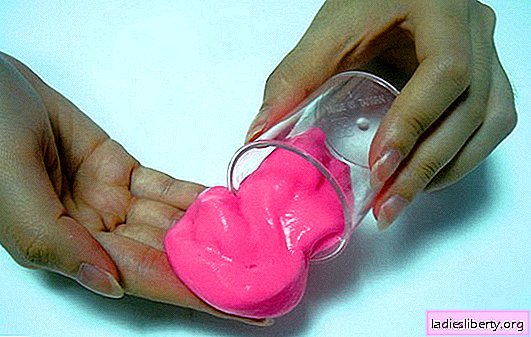
Quincke's edema is an acute allergic reaction that occurs suddenly, a manifestation of which is severe swelling of the mucous membranes, skin and subcutaneous fat. It often develops on the face, neck, chest, on the hands and feet.
Sometimes spreads to internal organs and joints. In severe cases, the brain is involved in the process. This pathology can occur in any person, but according to statistics, it is most often observed in women and children.
Quincke's edema - causes
According to etiological factors, Quincke's edema is divided into:
• pseudo-allergic;
• allergic;
• idiopathic.
1. Pseudo-allergic - is a manifestation of the innate pathology of the complement system. It is a blood protein that is directly related to the primary allergic and immune reactions. In the normal state, these proteins are inactive. Their activation occurs when a foreign antigen enters the body. In this case, the complement system can be activated both spontaneously and in response to various stimuli (chemical or thermal), causing an extensive allergic reaction. That is, angioedema can develop with hypothermia or overheating, with contusion, with skin contact with any chemical substance.
2. Allergic Quincke edema occurs when a specific allergen is introduced into the human body. In response to this, substances acting as a vasodilator (bradykinin, etc.) are released into the blood in large quantities. Under their influence, the permeability of the walls of the vessels increases sharply, which leads to the ingress of the liquid part of the blood into the surrounding tissue. As a result, the distance between the cells increases, respectively, an increase in tissue volume occurs - edema is formed.
With Quincke's edema, the causes of allergic angioedema can be:
• food (most often - citrus fruits, seafood, chocolate, nuts);
• pollen of plants;
• bites of various insects;
• fluff, feather, wool of animals and birds;
• household chemicals;
• medications.
3. Idiopathic Quincke edema occurs for no apparent reason, when it is impossible to find out the root cause of its development.
Predisposing factors are:
• thyroid pathology;
• diseases of the digestive system;
• autoimmune diseases;
• helminthiases;
• blood diseases;
• stress;
• injuries;
• surgical interventions, including dental;
• pregnancy;
• taking contraceptives.
Quincke's edema can develop in the second week of taking ACE inhibitors (angiotensin-converting enzyme) - drugs used in the treatment of hypertension (captopril, enalapril, ramipril, etc.). In the process of their action, the level of the angiotensin II enzyme decreases, leading to an increase in the release of bradykinin into the blood. This can lead to Quincke's edema.
Quincke's edema often acquires a chronic course and proceeds with relapses.
Quincke's edema - the first symptoms and signs
The beginning is always sharp. With Quincke's edema, the first symptoms develop rapidly within a few minutes. Pathology is manifested by local edema of the mucous membrane of the oral cavity, eyelids, lips, scrotum, respiratory and urogenital systems, and the gastrointestinal tract.
With Quincke's edema, signs of a pathological condition, in addition to edema of the mucous membranes and soft tissues, are:
• labored breathing;
• hoarse voice up to aphonia;
• cyanosis and swelling of the tongue;
• anxiety;
• sometimes - loss of consciousness.
The most dangerous form of this pathology is involvement in the process of the larynx, pharynx, trachea. This occurs in 25% of cases of angioteka. Edema of such localization is accompanied by the following symptoms:
• difficulty breathing until an attack of suffocation;
• hoarseness of voice;
• barking dry cough;
• aphonia;
• loss of consciousness.
An objective examination clearly shows a sharp narrowing of the lumen of the pharynx due to edema of the soft palate and palatine arches. Further spread of angiotherapy in the larynx or trachea can end fatally due to possible suffocation.
If the process captures the internal organs, vomiting occurs, loose stools, sharp paroxysmal pain in the abdomen - a condition develops in the clinic that resembles an acute abdomen.
With the involvement of the brain, vivid symptoms of damage to the nervous system appear:
• hemiplegia;
• aphasia;
• convulsive attacks;
• signs of Meniere's syndrome: severe dizziness, nausea, vomiting.
With the spread of edema to the urogenital system, a clinic of acute cystitis occurs up to anuria (acute urinary retention).
Quincke's edema - treatment
With the development of Quincke's edema, treatment should begin immediately, since in severe cases, timely medical care largely determines the prognosis for life.
Since Quincke's edema is a life-threatening condition, its development requires an urgent call for an ambulance, especially if this pathology first occurred.
Indications for hospitalization:
• swelling of the tongue;
• edema of the respiratory tract, manifested by difficulty breathing, an attack of suffocation;
• intestinal edema, accompanied by acute pain, vomiting, diarrhea;
• inefficiency of treatment measures carried out at home.
Before the ambulance arrives, the treatment is as follows:
• airway release;
• check breathing, pulse, blood pressure;
• the introduction of medicines: adrenaline, glucocorticosteroid, antihistamine, in this sequence.
Adrenaline is administered intramuscularly in the prehospital period in a standard dose of 0.3-0.5 ml of a 1% solution. If the result does not occur, the injection is repeated every 15 minutes.
Adrenaline action:
• dramatically reduces the intake of histamine, bradykinin, etc. in the blood;
• normalizes blood pressure;
• reduces bronchospasm;
• supports cardiac activity.
Glucocorticosteroid drugs are administered in the following dosages, depending on the severity of the condition: dexamethasone - 8 - 32 mg, prednisone - 60 - 150 mg.
The action of glucocorticosteroids:
• reduce inflammation, swelling, itching;
• stabilize blood pressure;
• stop the release of mediators from mast cells (histamine, kinins, prostaglandins), leading to a sharp increase in vascular permeability and the development of an allergic reaction;
• stop bronchospasm;
• improve heart activity.
Antihistamines have an effect similar to that of hormones. H1 blockers are used - histamine receptors (suprastin, loratidine, clemastine, tavegil, diphenhydramine, etc.). The effectiveness of antihistamines increases with the combined use of H2 receptor blockers (ranitidine, famotidine, etc.).
During hospitalization, the threat to life is first eliminated - the airway is restored if it was not possible to do at the previous stage. If necessary, tracheal intubation or conicotomy is performed.
In a hospital, treatment is continued, phased introduction:
1. Preparations of protease inhibitors (aminocaproic acid).
2. Desensitizing therapy (sodium thiosulfate).
3. Detoxification therapy (parenteral administration of Reosorbilact, Ringer's solution, etc.).
4. Enterobacteria inside (Atoxil, Enterosorb, Polysorb, etc.)
5. Diuretic drugs (furosemide).
6. To reduce the permeability of the vascular walls - ascorbic acid.
7. If necessary, hemosorption, plasmapheresis.
For the entire period of treatment, a strict hypoallergenic diet is observed. In the future, the diet gradually expands, but for a long time it is necessary to exclude alcohol and foods that are potential allergens.
Within a month, it is recommended to exclude hypothermia and nervous stress.
With pseudo-allergic (hereditary) Quincke's edema, the introduction of:
• C1 - inhibitors;
• native plasma, if any;
• antifibrinolytics (aminocaproic, tranexamic acid);
• androgens (methyltestosterone, danazole, stanazole);
• GCS, diuretics - for swelling of the face, neck.
There are contraindications to the administration of androgens. You can not enter children during pregnancy and lactation, with a tumor of the prostate gland.
Quincke edema - prevention
With Quincke's edema, prevention includes a number of hygiene measures and some rules on nutrition and lifestyle, the observance of which will help to avoid the development of this dangerous condition for health and life. First of all, measures must be taken to exclude contact with allergens:
• carry out regular wet cleaning in the apartment;
• ventilate the room;
• wipe off dust;
• get rid of feather and down pillows and blankets;
• refuse pets if in the past there was Quincke's edema on animal hair;
• follow a hypoallergenic diet;
• timely treat existing chronic diseases.
If at least once Quincke's edema developed, it is necessary that you always have with you an antihistamine, adrenaline and prednisone (dexazone) in ampoules. If parenteral administration of these drugs is not possible, the contents of the ampoules can be poured under the tongue - the drugs are rapidly absorbed by the sublingual veins, and the effect comes very quickly.
In case of Quincke's edema, the prevention of hereditary (pseudo-allergic) angioedema is the intake of androgens for 6 days (if there are no contraindications) or aminocaproic acid inside 2 days before surgery or dental procedures. The aminocaproic acid infusion for this purpose is carried out immediately before surgery.
Quincke's edema refers to life-threatening conditions, so you need to treat him with all responsibility and take all measures to prevent it.











